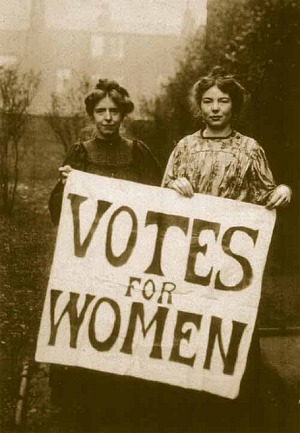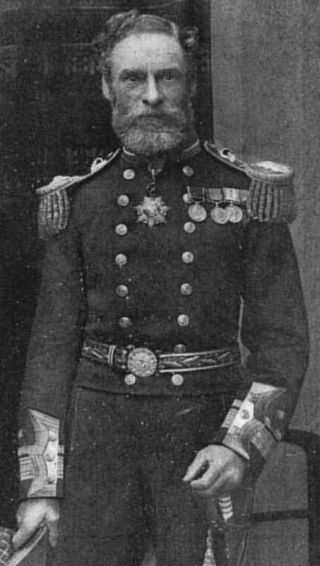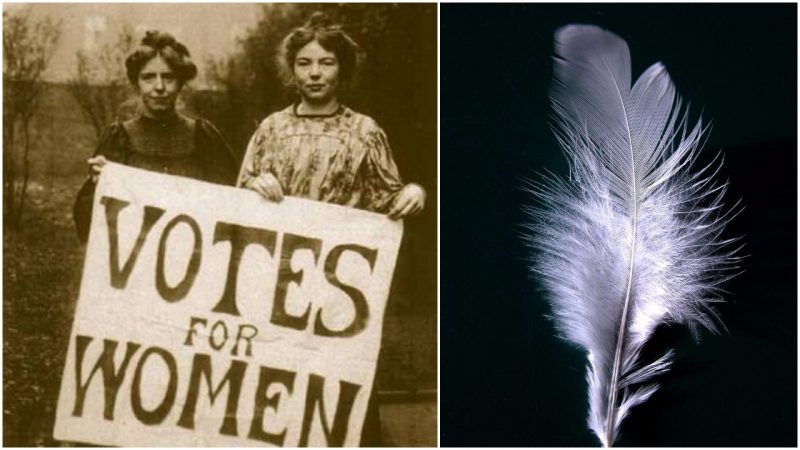The white feather campaign caused a special kind of drama across the British empire during World War I. It was organized by prominent suffragettes of the time as a propaganda device aimed at men who didn’t participate in the war. Although it is hard to judge this stance today, the idea hardly seems beneficial for anyone. And the women often failed to recognize the consequences of their acts.
Although it was conceived of as a symbol of cowardice much earlier, the World War I white feather campaign was initiated by a Vice-Admiral in the Royal Army, Charles Fitzgerald. The Admiral had on his mind the British soldiers on the front when he pushed for it. But it was spread by suffragettes who took it as their job to pin white feathers on men they saw on the streets.
The women’s criteria of judgment was based on looking at a man who appeared fit to serve in the army. Aside from being absent of emotional understanding, the campaign lacked research. This meant that women were handing the flowers to more or less any man whom they found on the street instead of on the front.
There were many feathers handed out inappropriately: young boys unfit for the army because of their age; men who were employed in essential professions; men who were unfit for the war due to physical disabilities; and maybe worst of all, to veterans who had been honorably discharged from the army. It frustrated young boys who wanted to prove their masculinity, it offended men who tried to enlist but were turned down as unfit, and it was simply rude and ungrateful to hand a white feather to veterans.

In a story published in The Guardian a few years ago, the niece of a private who served and died in the war told a tragic story. At the outbreak of the war, in 1914, he tried to enlist as a soldier but was turned away because of his vision. Two years after he failed in his attempt to join the army, the man was going home from work to his wife and three daughters when a woman handed him a white feather.
The next day, upset and confused, he joined the front. However, by 1916, the criteria for a soldier had fallen. His leaving marked his daughters’ lives. The man, as well his brothers, died on the front. His letters were kept as a treasure by his family, and the memory of him was vividly transmitted to his grandchildren. Many years later, his niece, who, of course, had never met him, told the story of how her mother never managed to get over his death. Even in the last years of her life, suffering from dementia, when she could barely remember the names of her own children, she still felt furious with the politicians and their war policies, but mostly she was distraught over the white feather.

Another story from 1916 tells of Norman Demuth, a private, who was a musicologist and composer before he joined the war. He was wounded and then discharged from the British Army. While riding on a bus, a woman sitting in front of him handed him a white feather. As a matter of fact, that was one of many he received after he returned home from the front. Only this time, Demuth decided to be rude and cleaned his pipe with the feather, and when handing it back to the woman he remarked that he’d always wanted one but unfortunately he was unable to get one while in the trenches. The incident caused much anger among the other passengers on the bus, who started shouting at the woman.
Perhaps even more ironic was pinning Petty Officer George Samson with a white feather when on his way to receive the Victoria Cross, the country’s most prestigious award, for his bravery at Gallipoli. The 26-year-old seaman had helped hundreds of other wounded soldiers, keeping their spirits up while under heavy fire. He eventually succumbed to grave injuries himself from machine-gun fire.

But the supporters of the campaign, determined to keep pinning a “coward” with a white feather, didn’t want to give up. They pressured many men to enlist and despite some ending up dead “because of the white feather,” there were some who became heroes for the same reason. Among them was Roland Gwayne, who later became mayor of Eastbourne. He came back from the front, where he’d gone after he received his weather, and received the Distinguished Service Order for bravery.
It is indeed difficult to put all the blame on suffragettes, as they had their reasons within the context of the time. They were waging their own battle with men over the vote and a government that didn’t support them. Some historians speculate that this was their way of getting public attention for the cause. The way they did it undoubtedly lacked sympathy, but these women reportedly felt they were fighting for their rights.
